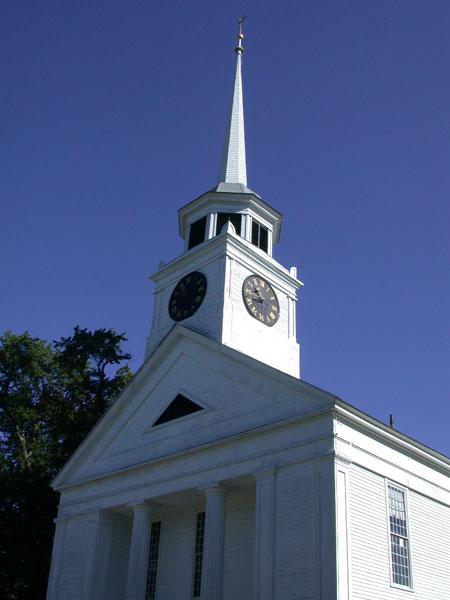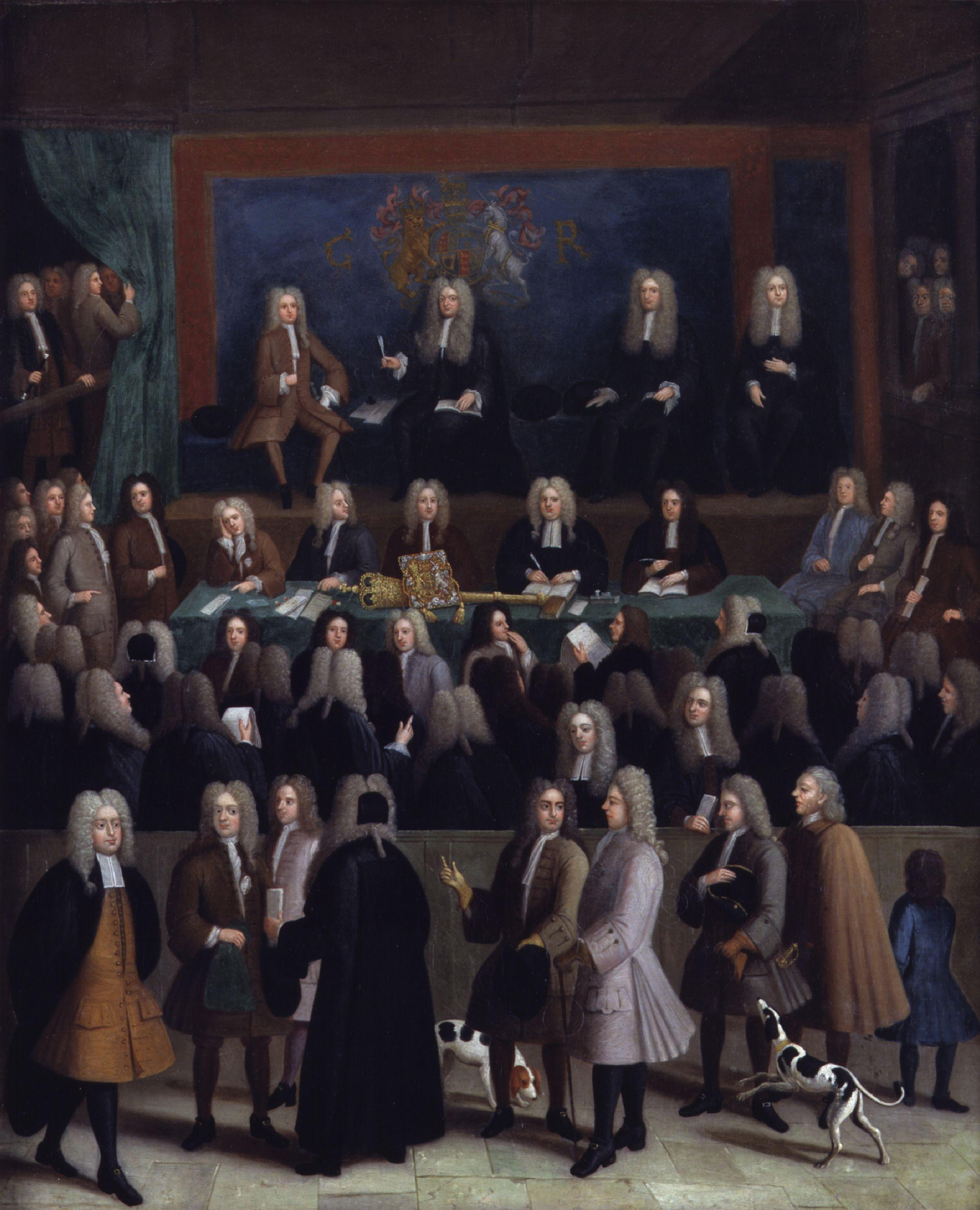|
Abijah Bigelow
Abijah Bigelow (December 5, 1775 – April 5, 1860) was a U.S. Representative from Massachusetts. Born in Westminster in the Province of Massachusetts Bay, the son of Elisha and Sarah (Goodridge) Bigelow, Abijah Bigelow studied at Leicester (Massachusetts) Academy and New Ipswich Academy at New Ipswich, New Hampshire. He graduated from Dartmouth College, Hanover, New Hampshire, in 1795. He studied law in Groton, Massachusetts. He was admitted to the Worcester County bar in 1798 and commenced practice in Leominster, Massachusetts, in the same year. He was town clerk of Leominster 1803–1809. He served as member of the Massachusetts House of Representatives 1807–1809. He was a Justice of the Peace 1809-1860 and justice of the quorum 1812–1860. Bigelow was elected as a Federalist to the Eleventh Congress to fill the vacancy caused by the resignation of William Stedman. He was reelected to the Twelfth and Thirteenth Congresses and served from October 8, 1810, to Ma ... [...More Info...] [...Related Items...] OR: [Wikipedia] [Google] [Baidu] |
Groton, Massachusetts
Groton is a town in northwestern Middlesex County, Massachusetts, United States, within the Greater Boston metropolitan area. The population was 11,315 at the 2020 census. An affluent bedroom community roughly 45 miles from Boston, Groton has a large population of professional workers, many of whom work in Boston's tech industry. It is loosely connected to Boston by highways ( Route 2) and commuter rail (the MBTA Fitchburg Line). The town has a long history dating back to the colonial era. It was a battlefield in King Philip's War and Queen Anne's War, and several Grotonians played notable roles in the American Revolution (including William Prescott, the American commander at the Battle of Bunker Hill) and Shays' Rebellion. Groton is home to two college-preparatory boarding schools: Lawrence Academy at Groton, founded in 1792; and Groton School, founded in 1884. Notable Groton residents include former U.S. Secretary of State John Kerry, sports writers Peter Gammons and Dan Sh ... [...More Info...] [...Related Items...] OR: [Wikipedia] [Google] [Baidu] |
American Antiquarian Society
The American Antiquarian Society (AAS), located in Worcester, Massachusetts, is both a learned society and a national research library of pre-twentieth-century American history and culture. Founded in 1812, it is the oldest historical society in the United States with a national focus. Its main building, known as Antiquarian Hall, is a U.S. National Historic Landmark in recognition of this legacy. The mission of the AAS is to collect, preserve and make available for study all printed records of what is now known as the United States of America. This includes materials from the first European settlement through the year 1876. The AAS offers programs on a wide variety of subjects including but not limited to Environmental History, Indigenous Peoples Studies, and American Religion for professional scholars, pre-collegiate, undergraduate and graduate students, educators, professional artists, writers, genealogists, and the general public. The collections of the AAS contain over fou ... [...More Info...] [...Related Items...] OR: [Wikipedia] [Google] [Baidu] |
Rural Cemetery (Worcester, Massachusetts)
Rural Cemetery is located on 180 Grove Street in Worcester, Massachusetts. More than 13,000 people are buried at the cemetery, including congressmen, mayors, governors, and professional people. History The cemetery was incorporated in 1838 on the quiet outskirts of town, at the suggestion of Edward D. Bangs in 1837 to serve as the town's cemetery, the older cemeteries having been neglected, overpopulated, or trampled by livestock. David Waldo donated rolling, treed land he purchased for $1400 in September 1837. It was located on the road leading to Holden from Worcester, which was previously owned by Judge Timothy Paine. The state legislature passed the bill and signed by Governor Edward Everett to incorporate the "Proprietors of Rural Cemetery in Worcester". A portion of the land was set aside for a garden and the design included shrubs, trees and "other rural ornaments". A key goal in the founding of the rural cemetery was to create an ongoing memorial to the people who had pas ... [...More Info...] [...Related Items...] OR: [Wikipedia] [Google] [Baidu] |
Court Of Equity
A court of equity, also known as an equity court or chancery court, is a court authorized to apply principles of Equity (law), equity rather than principles of law to cases brought before it. These courts originated from petitions to the Lord Chancellor, Lord Chancellor of England and primarily heard claims for relief other than damages, such as specific performance and Prerogative writ, extraordinary writs. Over time, most equity courts merged with courts of law, and the adoption of various Acts granted courts combined jurisdiction to administer common law and equity concurrently. Courts of equity are now recognized for complementing the common law by addressing its shortcomings and promoting justice. In the early years of the United States, some states followed the English law, English tradition of maintaining separate courts for law and equity. Others combined both types of jurisdiction in their courts, as the United States Congress, US Congress did for Federal judiciary of the ... [...More Info...] [...Related Items...] OR: [Wikipedia] [Google] [Baidu] |
Leicester Academy
Leicester Academy was a private, state chartered school in Leicester, Massachusetts. History Leicester Academy was founded on March 23, 1784, when the Act of Incorporation for Leicester Academy was passed by the Massachusetts General Court as a private, state chartered institution. The charter issued to the Academy bears the bold signature of John Hancock, Governor of Massachusetts; and Samuel Adams, President of the Senate. The Academy opened on June 7, 1784 on land donated by Jewish merchant Aaron Lopez in Leicester, Massachusetts. Early trustees of the academy included Rufus Putnam (who was also one of its principal benefactors), Moses Gill, Levi Lincoln Sr., Joseph Allen, Seth Washburn, Samuel Baker, and several clergymen of the area. The purpose of Leicester Academy was to promote piety and virtue; and for the education of youth in the English, Latin, Greek, and French languages, together with writing, arithmetic and the art of speaking. The first faculty consisted ... [...More Info...] [...Related Items...] OR: [Wikipedia] [Google] [Baidu] |
War Of 1812
The War of 1812 was fought by the United States and its allies against the United Kingdom of Great Britain and Ireland, United Kingdom and its allies in North America. It began when the United States United States declaration of war on the United Kingdom, declared war on Britain on 18 June 1812. Although peace terms were agreed upon in the December 1814 Treaty of Ghent, the war did not officially end until the peace treaty was ratified by the 13th United States Congress, United States Congress on 17 February 1815. AngloAmerican tensions stemmed from long-standing differences over territorial expansion in North America and British support for Tecumseh's confederacy, which resisted U.S. colonial settlement in the Old Northwest. In 1807, these tensions escalated after the Royal Navy began enforcing Orders in Council (1807), tighter restrictions on American trade with First French Empire, France and Impressment, impressed sailors who were originally British subjects, even those who ... [...More Info...] [...Related Items...] OR: [Wikipedia] [Google] [Baidu] |
13th United States Congress
The 13th United States Congress was a meeting of the legislative branch of the United States federal government, consisting of the United States Senate and the United States House of Representatives. It met in Washington, D.C. from March 4, 1813, to March 4, 1815, during the fifth and sixth years of James Madison's Presidency of James Madison, presidency. The apportionment of seats in the United States House of Representatives, House of Representatives was based on the 1810 United States census. Both chambers had a Democratic-Republican Party, Democratic-Republican majority. The first two sessions were held at the United States Capitol, Capitol building while the third, convened after the Burning of Washington, took place in the 1836 U.S. Patent Office fire, First Patent Building. Major events * September 10, 1813: War of 1812: Battle of Lake Erie * October 5, 1813: War of 1812: Battle of the Thames * March 27, 1814: Creek War: Battle of Horseshoe Bend (1814), Battle of H ... [...More Info...] [...Related Items...] OR: [Wikipedia] [Google] [Baidu] |
12th United States Congress
The 12th United States Congress was a meeting of the legislative branch of the United States federal government, consisting of the United States Senate and the United States House of Representatives. It met in Washington, D.C. from March 4, 1811, to March 4, 1813, during the third and fourth years of James Madison's Presidency of James Madison, presidency. The apportionment of seats in the United States House of Representatives, House of Representatives was based on the 1800 United States census. Both chambers had a Democratic-Republican Party, Democratic-Republican majority. Major events *November 6, 1811: Battle of Tippecanoe: William Henry Harrison defeated Tecumseh's forces * December 16, 1811: New Madrid earthquake * April 4, 1812: President Madison enacted a 90-day embargo on trade with the United Kingdom *April 20, 1812: Vice President George Clinton (vice president), George Clinton died *June 18, 1812: War of 1812: United States declared war on Great Britain *August 16 ... [...More Info...] [...Related Items...] OR: [Wikipedia] [Google] [Baidu] |
11th United States Congress
The 11th United States Congress was a meeting of the legislative branch of the United States federal government, consisting of the United States Senate and the United States House of Representatives. It met in Washington, D.C., from March 4, 1809, to March 4, 1811, during the first two years of James Madison's presidency. The apportionment of seats in the House of Representatives was based on the 1800 United States census. Both chambers had a Democratic-Republican majority. Major events * March 4, 1809: James Madison became President of the United States * October 27, 1810: Annexation of West Florida from Spain Major legislation * May 1, 1810: Macon's Bill Number 2, ch. 39, Constitutional amendments * May 1, 1810: Approved an amendment to the United States Constitution that would strip United States citizenship from any citizen who accepted a title of nobility from a foreign country, and submitted it to the state legislatures for ratification ** This amendment, commonly ... [...More Info...] [...Related Items...] OR: [Wikipedia] [Google] [Baidu] |
Federalist Party (United States)
The Federalist Party was a conservativeMultiple sources: * * * * * * * * and nationalist American political party and the first political party in the United States. It dominated the national government under Alexander Hamilton from 1789 to 1801. The party was defeated by the Democratic-Republican Party in 1800, and it became a minority party while keeping its stronghold in New England. It made a brief resurgence by opposing the War of 1812, then collapsed with its last presidential candidate in 1816. Remnants lasted for a few years afterwards. The party appealed to businesses who favored banks, national over state government, and manufacturing an army and navy. In world affairs, the party preferred Great Britain and strongly opposed involvement in the French Revolutionary and Napoleonic Wars. The party favored centralization, federalism, modernization, industrialization, and protectionism. The Federalists called for a strong national government that promoted economi ... [...More Info...] [...Related Items...] OR: [Wikipedia] [Google] [Baidu] |




